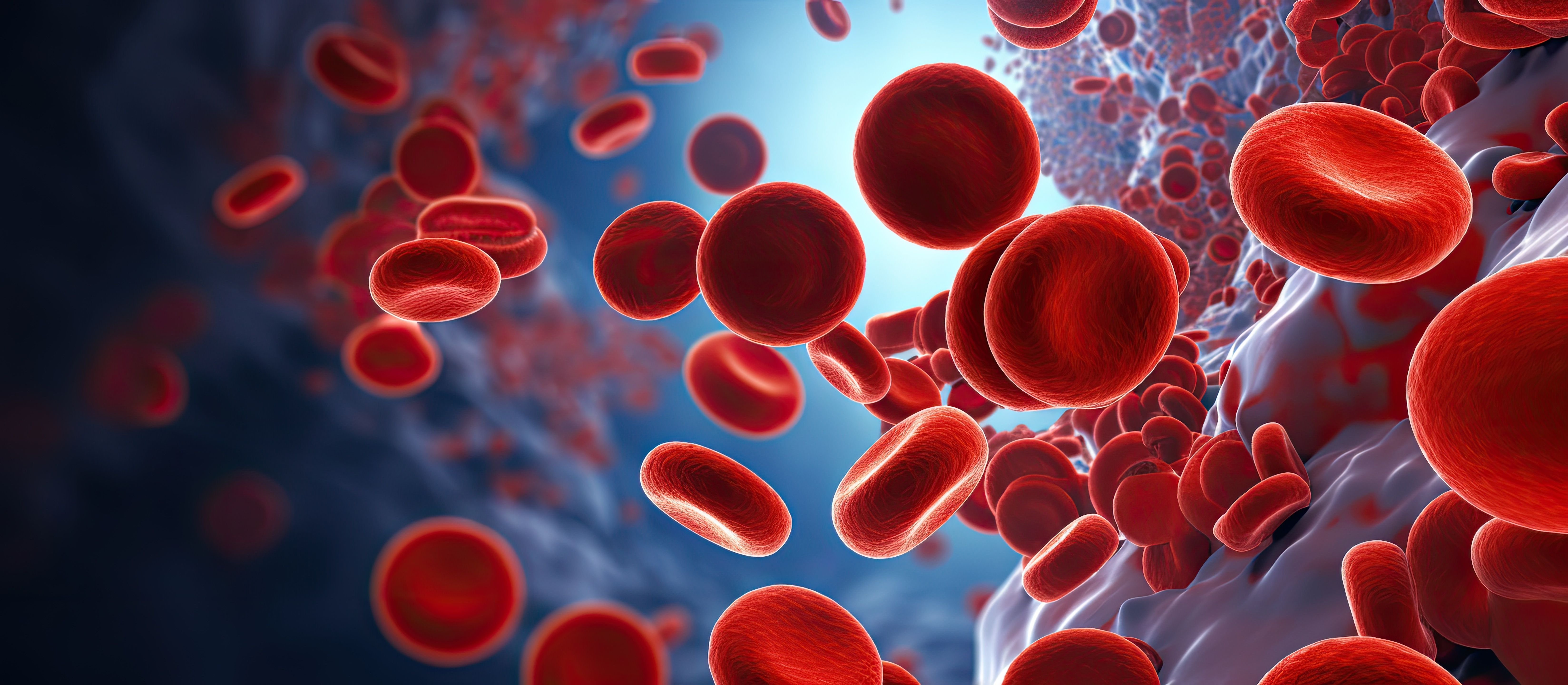Breaking Ground: FDA Approves Ponatinib and Chemotherapy for Ph+ ALL
In an interview with Targeted Oncology, Elias Jabbour, MD, discussed the approval of ponatinib and what it means for patients with Philadelphia chromosome-positive acute lymphoblastic leukemia.
Elias Jabbour, MD

On March 19, 2024, the FDA granted accelerated approval to ponatinib (Iclusig) for the treatment of adult patients with newly diagnosed Philadelphia chromosome-positive acute lymphoblastic leukemia (Ph+ ALL), based on data from the PhALLCON trial (NCT03589326).1
The phase 3 study included 245 adult patients with newly diagnosed Ph+ ALL. Once enrolled, patients were randomized 2:1 to receive ponatinib 30 mg orally once a day or imatinib (Gleevec) 600 mg orally once daily with chemotherapy. The primary end point was minimal residual disease (MRD)-negative complete response (CR) at the end of induction.
Highlights from the study include that in the ponatinib arm, the MRD-negative CR rate was 30% compared with 12% in the imatinib arm (risk difference, 0.18; 95% CI, 0.08-0.28; P =.0004).2
This approval marks the first FDA approval in Ph+ ALL to be based on the novel primary end point of MRD-negative CR.
“This is the first study in Ph+ ALL where the FDA granted approval based on meeting the primary end point of MRD-negative CR, and now, we have a first line [tyrosine kinase inhibitor (TKI)] approved,” Elias Jabbour, MD, told Targeted OncologyTM, in an interview.
In the interview Jabbour, a professor in the Department of Leukemia, Division of Cancer Medicine, at The University of Texas MD Anderson Cancer Center in Houston, discussed the approval and what this means for patients with Ph+ ALL.
Microscopic images of red blood cells, activated platelets, and white blood cells as a result of leukemia: © AkuAku - stock.adobe.com

Targeted Oncology: Can you provide an overview of the significance of the FDA approval of ponatinib plus chemotherapy for the treatment of adult patients with newly diagnosed Ph+ ALL?
Jabbour: On March 19, the FDA granted approval for ponatinib as a first-line option for Ph+ ALL. This is the first time ever where the FDA approved a drug for first-line ALL treatment with chemotherapy. Not only [is it] the first time, but it is the first time in the history of acute leukemia where the approval was based on MRD assessment at the end of induction. This is the first study in Ph+ ALL where the FDA granted approval based on meeting the primary end point of MRD-negative CR, and now, we have a first-line TKI approved.
Could you explain why this end point was chosen and its significance in assessing treatment efficacy?
The most obvious thing is you need a drug that can provide a rapid clinical benefit with an ultimate long-term improvement. There is a lot of evidence suggesting that if we can eradicate minimal disease early on, that correlates with the long-term survival benefit. There was a meta-analysis published that showed that among 13,000 patients, those who are MRD-negative did much better than [patients who were] MRD-positive and therefore, we know it does help.
We at MD Anderson have shown that if one has 3 months [of] MRD negativity, patients have a better outcome. With this evidence, we did negotiate with the agency about considering early MRD negativity as a surrogacy for long-term outcome benefit and as such for approval. After assessing the whole evidence, the FDA agreed to consider MRD-negative CR as the primary end point. That means the patient needs to have, at the end of induction or 12 weeks, a CR sustained for a month at least, and have 10-4 MRD negativity.
How does MRD-negative CR serve as a prognostic indicator for long-term outcomes in patients with Ph+ ALL, and what implications does this have for patient care and management?
It matters for the long-term outcome. We know that patients [who are] MRD-negative do much better than [those who are] MRD-positive in the long-term. Historically, what we did is if [one is] MRD-positive at the end of induction, [they] go for transplantation. If MRD-negative, [they] do not go for transplant. Therefore, this is a major decision to be made for the patient and healthcare providers. If my patient is able to get an MRD-negative CR, then I will omit going for transplantation.
That is a drastic strategy change resulting from the PhALLCON trial. Those who were on the ponatinib arm did receive less transplant compared with those who [were on the] imatinib arm because they had persistent residual disease and therefore, they had a transplant.
The phase 3 PhALLCON study compared ponatinib vs imatinib plus reduced-intensity chemotherapy. What were the methods and design of the study?
It is a randomized trial, randomizing 2:1 patients with Ph+ ALL to receive low-dose chemotherapy based on the [European Working Group on Adult ALL (EWALL)] induction backbone, plus ponatinib at 30 mg per day, and reduced to 15 mg, or imatinib plus low-dose chemotherapy, 600 mg per day imatinib. Then, the patient received induction, consolidation, and maintenance with single-agent TKIs as long as they were doing well with treatment and [had] no toxicities or progression.
What were the key findings from this study?
The primary end point for the study was MRD-negative CR [and] the study met its primary end point. In fact, patients who were assigned to ponatinib had a 2-fold increase of the MRD-negative CR compared with those who were on imatinib. Not only have we shown that we increase the MRD-negative CR, but that did not come at a price of a safety concerns because historically, at the full dose of ponatinib at 45 mg per day, we have seen an increase of the incidence of vaso-occlusive events. In this trial, there was no difference in the rate of adverse events between ponatinib and imatinib. In addition, we decrease ponatinib dose to 15 mg once we have a response and therefore, this is a major strategy to decrease the risk of adverse events.
This is the main finding of the study that led the FDA to grant an approval for the drug in the frontline setting. Now, the follow-up is too short, and we know from the study that patients on imatinib, because they did not achieve a molecular response, they went on to receive subsequent therapy with different agents including ponatinib and blinatumomab [Blincyto], and this is what we call the crossover. Despite that, there was a trend for better [event-free survival (EFS) with ponatinib], but follow-up is short. [Progression-free survival (PFS)] is in favor of ponatinib as well, but we still have to wait for long-term follow-up to see how the survival is maturing.
How does the approval of ponatinib for frontline Ph+ ALL impact current treatment paradigms?
Today in the United States, we have imatinib in frontline use and dasatinib [Sprycel] most used, without randomized studies, and the [National Comprehensive Cancer Network] recommends additional ponatinib based on our own data from MD Anderson. Now with this approval, ponatinib will be the first choice to be considered in frontline ALL, not because it was only approved, but it helps a lot. Ponatinib is more potent than other TKIs. In a way, it does deepen the responses, a feature that was demonstrated in the PhALLCON trial.
With other TKIs, we have seen a resistance to imatinib or dasatinib driven by the emergence mutations, mainly gatekeeper T315I mutation, and we know ponatinib can suppress the emergence of this mutation; therefore, it is a major advantage and I think that it will be used more often in a frontline setting than any other TKIs. Outside the United States, the only drug available and approved is imatinib. With this data, once registered in different countries, ponatinib will be the standard of care for all patients.
What considerations were taken into account regarding the safety profile of ponatinib in the PhALLCON study? How does it compare to imatinib in terms of safety outcomes?
[There were] very good findings from this study. In fact, when you look at the safety concern, we compare imatinib to ponatinib, and this was purposeful in the trial. There was no difference in the rates of adverse events with ponatinib compared with imatinib. We did not see higher vascular events with ponatinib compared with imatinib. Then if we look at the discontinuation rate from toxicities, there was no difference as well. We know imatinib is quite safe and therefore, the early use of ponatinib with response-dose adjustment strategy allows us to deliver an effective and safe treatment.
With this accelerated approval, what steps will be taken to ensure continued monitoring of the efficacy and safety of ponatinib in patients with frontline Ph+ ALL?
Of course we have the accelerated FDA approval, so we need final and full approval. We need to have a longer follow-up. We need to follow our patients, make sure they take the drug, and make sure there are no adverse events encountered. This is important and we need to look at the long-term outcome of these patients, look at the EFS, PFS, and survival. These are not mature yet, but we hope to get the data maturing enough so we can get a full and final approval of ponatinib.
Looking ahead, what are the potential implications of this approval on future research and development efforts in the treatment of Ph+ ALL and other hematologic malignancies?
We have ponatinib approved, which is a first cornerstone. We needed to have a TKI that is quite potent and approved; that is granted. Now, what do we need to do? Maybe different combinations such as ponatinib and blinatumomab. We tested this combination so far and have seen survival rates of 90%. I think ponatinib is the first TKI to be approved, which is amazing, but we need to use ponatinib and build on it with different combinations and try to optimize it. We have to further improve the outcome. I think this is the best time [as] we have a new drug for ALL that will help a lot of people and save a lot of lives.
REFERENCES:
1. FDA grants accelerated approval to ponatinib with chemotherapy for newly diagnosed Philadelphia chromosome-positive acute lymphoblastic leukemia. News release. FDA. March 19, 2024. Accessed March 19, 2024. https://tinyurl.com/2p9893fv
2. Jabbour E, Kantarjian H, Aldoss I, et al. First report of PhALLCON: a phase 3 study comparing ponatinib versus imatinib in newly diagnosed Philadelphia chromosome-positive acute lymphocytic leukemia. Presented at: 2023 SOHO Annual Meeting; September 6-9, 2023; Houston, TX.
Novel Approaches Focus on Limiting Toxicity in Older Patients With ALL
April 22nd 2024The major challenges for clinicians treating older patients with acute lymphoblastic leukemia surround the emergence of resistance to existing therapies and the toxicities associated with current chemotherapies.
Read More